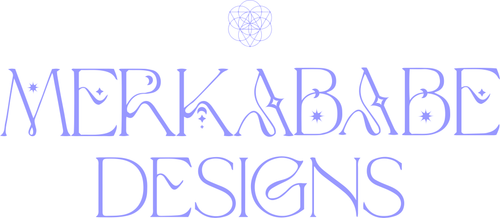In the hustle and bustle of our modern lives, it's all too easy to lose sight of our purpose and become disconnected from the deeper meaning of our existence. We often find ourselves on autopilot, navigating through the daily grind without a clear sense of intention. But what if there were a way to infuse every moment with purpose, to live intentionally, and to forge a profound connection with ourselves and others? This is where the transformative power of ceremony comes into play. Every moment is ripe with the capacity of ceremony, all that is required is your presence.
Understanding Intentional Living
Intentional living is a concept that has deep roots in human history. Throughout the ages, cultures across the globe have recognized the importance of living with purpose. It's about making deliberate choices and aligning your actions with your values and goals. In essence, it's the art of mindful living.
Historically, intentional living was closely tied to ceremonies and rituals. Ancient civilizations, from the Egyptians to the Mayans, incorporated ceremonial practices into their daily lives. These rituals were not mere superstitions but intentional acts meant to invoke a sense of purpose, gratitude, and connection with the divine. They were often moving and joyous.
The Power of Ceremony
Ceremony, in its various forms, has always been a bridge to the sacred, a way to infuse the mundane with meaning. From the sacred rituals of indigenous tribes to the religious ceremonies of established faiths, humans have recognized the power of ceremony to transform ordinary moments into something extraordinary.
Consider the Japanese tea ceremony, known as "chanoyu" or "sado." Dating back to the 9th century, this meticulously choreographed ritual is not just about brewing tea; it's a form of art, a spiritual practice, and a way of fostering connection between host and guest. It exemplifies how ceremony can turn a simple act into a profound experience.
Modern Relevance of Ceremony
In our fast-paced, digital age, one might wonder if ceremony still holds a place in our lives. The answer is a resounding yes. In fact, the need for intentional living and ceremony is arguably more critical than ever.
Today, we often find ourselves overwhelmed by information, distracted by technology, and disconnected from our inner selves. This is where ceremony can step in as a remedy. Modern practices like mindfulness meditation, yoga, and gratitude journaling are, in essence, forms of personal ceremony. They encourage us to slow down, be present, and intentionally cultivate a deeper connection with ourselves.
The Psychological Impact
The psychology of intentional living and ceremony is fascinating. Studies have shown that when we set clear intentions and engage in intentional actions, our brains respond positively. We experience a greater sense of purpose and fulfillment. It's as if our minds are wired to thrive on intentionality.
Moreover, participating in group ceremonies can foster a profound sense of belonging. Human beings are social creatures, and shared experiences like ceremonies strengthen our bonds with others. This is why rites of passage, such as weddings and graduations, continue to hold immense significance in our lives.
Crafting Your Personal Ceremonies
So, how can you start living with intention and incorporating ceremony into your life? The answer lies in crafting your personal ceremonies. These need not be grand or elaborate; they can be as simple as a morning ritual to set the tone for your day.
To invoke the sacredness of your ceremonies, you can utilize a variety of tools and elements. These tools help create a tangible and sensory experience, deepening your connection to the ritual. Here are some sacred items you can incorporate:
Crystals: Crystals have been used for centuries for their healing and energy-enhancing properties. Choose crystals that resonate with your intention. For instance, amethyst can promote tranquility and spiritual growth, while rose quartz can foster love and compassion.
Incense: The scent of incense can transport you to a different state of mind. Different scents carry various symbolic meanings. For example, sage is often used to purify and cleanse, while frankincense is associated with spiritual elevation.
Candles: Lighting candles not only sets a ceremonial ambiance but also symbolizes illumination and transformation. Consider colored candles that correspond to your intention or chakra colors for balance.
Herbs and Botanicals: Incorporate dried herbs, flowers, or leaves that have significance in your tradition or resonate with your purpose. For example, lavender is known for its calming properties, making it suitable for rituals focused on relaxation.
Altar or Sacred Space: Dedicate a specific area in your home as an altar or sacred space. Arrange your chosen tools, crystals, and elements on the altar to create a focal point for your ceremony.
Sound: Sound can play a crucial role in ceremony. Use singing bowls, bells, or chants to create a sonic atmosphere that resonates with your intention.
Intentional living and ceremony are intertwined aspects of the human experience that have stood the test of time. They offer us a path to live with purpose, to forge deeper connections, and to find meaning in our everyday lives. As we navigate the complexities of the modern world, the wisdom of intentional living and the transformative power of ceremony remain as relevant and necessary as ever. So, take a step back, slow down, and embrace the art of living with purpose through ceremony. Your journey to a more intentional and fulfilling life begins here and now, with the sacred tools that help you connect with the deeper essence of ceremony.
If you are craving more connection to self and community through the art of ceremony, be sure to attend our events, come into the shop and inquire about ceremonial tools, and join our community!

